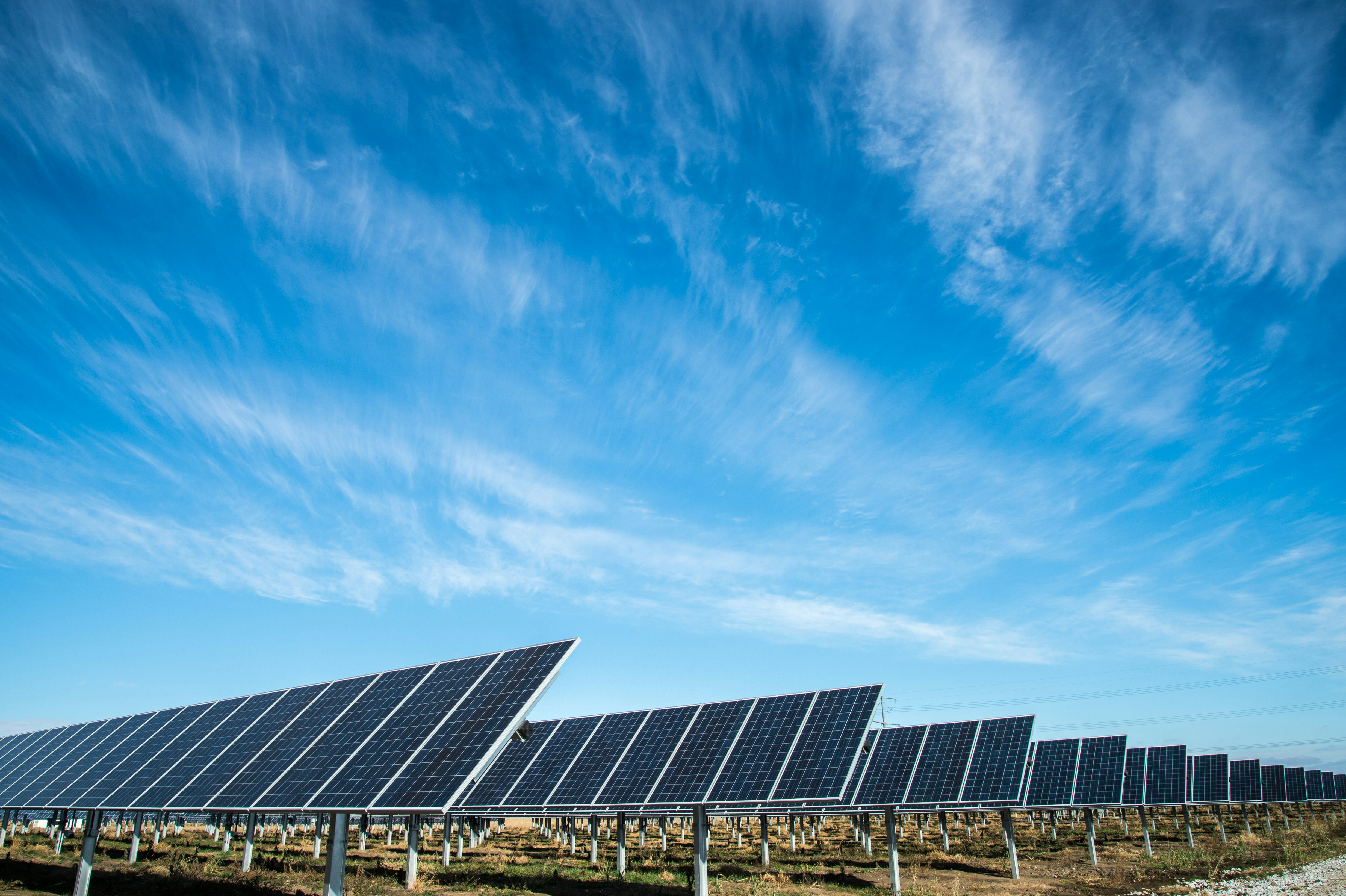The Power of the Sun

What is Solar Power?
Passive solar design utilizes the benefits of a building's location, temperature, and building materials. An intelligently planned passive solar home uses energy-efficient techniques to lower its heating and cooling loads first, and then uses solar energy to partially or entirely satisfy those lower loads. It is crucial to avoid oversizing south-facing glass and to make sure that it is appropriately shaded to prevent overheating and excessive cooling loads in the spring and fall due to the modest heating loads of modern dwellings. The most economical way to save heating and cooling expenses is through energy efficiency, so keep in consideration when incorporating solar features to your new or existing home design. .
Benefits
Affordable
Particularly since the federal residential solar tax credit was extended, solar energy for homes is now more inexpensive than before. On their income taxes, taxpayers are eligible for a 30% tax credit toward the cost of solar systems. But make sure to install before the tax credit drops to 26% on January 1, 2033.
Additionally, there are numerous financing alternatives available to make the process of buying solar systems simpler and need less cash up front. A solar loan usually has a monthly payment that is lower than the average energy bill.
Saving Money
With monthly electricity expenses on the rise, solar power has significant potential to reduce your costs, and it's expected to be a cost-effective choice for years to come. The quantity of electricity you save will vary based on your usage patterns, solar energy system capacity, and system size. A homeowner can host a solar energy system on their rooftop and buy back the electricity generated at a discounted rate—which is often less than what utilities charge customers—by choosing a leased, third-party owned system. This option also allows electricity rates to be locked in for a number of years.
Lights On, Powers Out
Having the ability to generate your own solar electricity can allow you to maintain power in the event of an outage. When residential solar energy systems are combined with battery storage, they are commonly referred to as solar-plus-storage systems. These systems generate electricity day or night without the need for grid backup power. An increasing number of homes nationwide are choosing to invest in battery storage as a result of advancements in battery technology and the implementation of financial incentives for energy storage.
Home Value
Investing in solar energy will probably raise the value of your house. According to a Berkeley National Laboratory study, home buyers nationwide have been ready to spend more for a house with an average-sized solar array because solar photovoltaic panels are perceived as enhancements, much like a remodeled kitchen or a finished basement. Third-party owned systems seem to have a generally neutral effect, however they can occasionally add value—particularly in the case of prepaid leases.
Versatility
Sunshine is all that solar panels require to produce electricity! There is still enough daylight to power the typical American home, even in the winter. No matter where you live, the Solar Energy Technologies Office (SETO) of the U.S. Department of Energy is committed to making sure solar panels can resist the weather. To ensure that panels function as well as possible regardless of weather or environment, SETO funds five Regional Test Centers across the nation, each in a different climate.
Environmental Impact
Out of all the energy sources, solar energy has the least adverse effect on the environment. It doesn't contaminate water or release greenhouse gasses. In contrast to nuclear power facilities, which require 20 times more water for upkeep, it also uses extremely little water. Considering that many solar installations, including residential solar panels, are located in metropolitan areas, the absence of noise during the production of solar energy is a significant advantage.
Affordable
Particularly since the federal residential solar tax credit was extended, solar energy for homes is now more inexpensive than before. On their income taxes, taxpayers are eligible for a 30% tax credit toward the cost of solar systems. But make sure to install before the tax credit drops to 26% on January 1, 2033. Additionally, there are numerous financing alternatives available to make the process of buying solar systems simpler and need less cash up front. A solar loan usually has a monthly payment that is lower than the average energy bill.
Saving Money
With monthly electricity expenses on the rise, solar power has significant potential to reduce your costs, and it's expected to be a cost-effective choice for years to come. The quantity of electricity you save will vary based on your usage patterns, solar energy system capacity, and system size. A homeowner can host a solar energy system on their rooftop and buy back the electricity generated at a discounted rate—which is often less than what utilities charge customers—by choosing a leased, third-party owned system. This option also allows electricity rates to be locked in for a number of years.
Lights On, Powers Out
Having the ability to generate your own solar electricity can allow you to maintain power in the event of an outage. When residential solar energy systems are combined with battery storage, they are commonly referred to as solar-plus-storage systems. These systems generate electricity day or night without the need for grid backup power. An increasing number of homes nationwide are choosing to invest in battery storage as a result of advancements in battery technology and the implementation of financial incentives for energy storage.
Home Value
Investing in solar energy will probably raise the value of your house. According to a Berkeley National Laboratory study, home buyers nationwide have been ready to spend more for a house with an average-sized solar array because solar photovoltaic panels are perceived as enhancements, much like a remodeled kitchen or a finished basement. Third-party owned systems seem to have a generally neutral effect, however they can occasionally add value—particularly in the case of prepaid leases.
Versatility
Sunshine is all that solar panels require to produce electricity! There is still enough daylight to power the typical American home, even in the winter. No matter where you live, the Solar Energy Technologies Office (SETO) of the U.S. Department of Energy is committed to making sure solar panels can resist the weather. To ensure that panels function as well as possible regardless of weather or environment, SETO funds five Regional Test Centers across the nation, each in a different climate.
Environmental Impact
Out of all the energy sources, solar energy has the least adverse effect on the environment. It doesn't contaminate water or release greenhouse gasses. In contrast to nuclear power facilities, which require 20 times more water for upkeep, it also uses extremely little water. Considering that many solar installations, including residential solar panels, are located in metropolitan areas, the absence of noise during the production of solar energy is a significant advantage.
Site Selection
If one wishes to construct a new passive solar home, part of the south side of the building needs to have an unobstructed "view" of the sun. The area south of your site may be used for other purposes in the future; little trees can grow to be large trees, and a multistory building there may obstruct your home's sunlight access. Landowners' access to the sun is protected in some places by zoning laws or other land use regulations. Look for a lot that is deep from north to south and locate the house on the north end of the property if solar access is not protected in your area.
